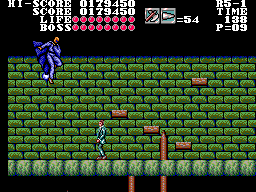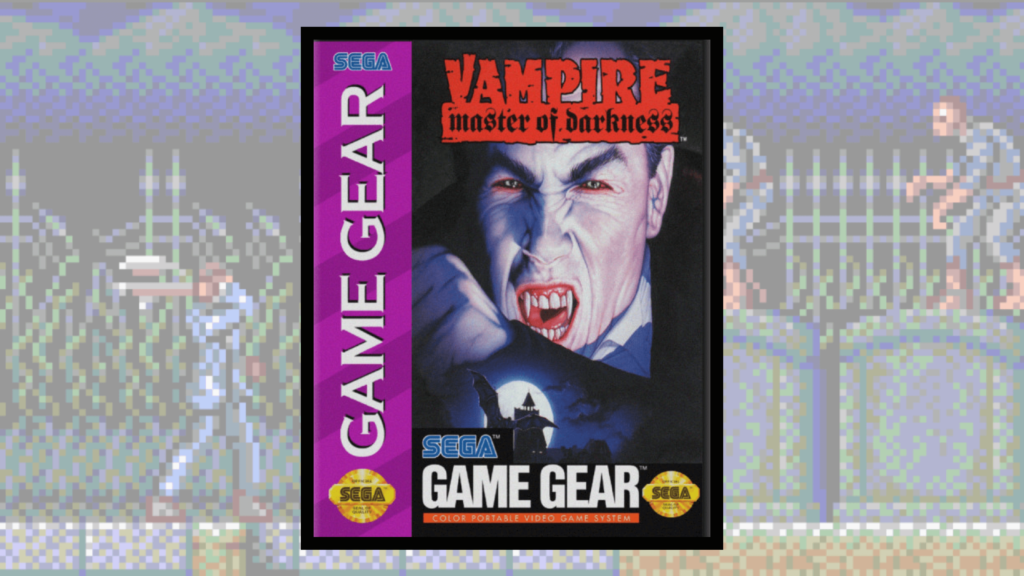Growing up in the 90s was a different time for gamers. The early half of the decade was dominated by Nintendo and Sega, and whichever console you owned governed which franchises you had access too. A good amount of console exclusives were at least met by equivalent counterparts on the other: Mario to Sonic, Final Fight to Streets of Rage, Final Fantasy to Shining Force. There wasn’t always a direct comparison though. One of the biggest gaps in Sega’s library was a spooky shaped cutout from Konami’s juggernaut Castlevania series.
By the time the Super Nintendo released Super Castlevania IV in 1991, Nintendo had seen four mainline games on their consoles and two spinoffs on the portable Game Boy. Sega had zero. They wouldn’t get their first, and only console exclusive in the series, until Bloodlines released in 1994. So what was a lowly Sega fan to do if they didn’t have a Nintendo device and wanted to slay Dracula’s minions? Obviously pick up the Tiger Electronics port of Castlevania II: Simon’s Quest and quit complaining. But after they were done with that, then what?

Clone games were nothing new, even in the early 90s. By 1993 we had dozens of copycats imitating Sonic’s speed, Mario’s platforming, and Tetris’ puzzles. Thankfully one such game sought to emulate the Gothic and brooding styling of Konami’s Castlevania series, and had mercy on the Sega faithful by making it a Sega console exclusive. Well, kind of. It was a Game Gear exclusive (with a PAL exclusive Master System release as well). The folks over at SIMS released Vampire: Master of Darkness for the North American Game Gear in 1993. A full year before Castlevania: Bloodlines would show up on the Genesis, and also two years after SNES players were enjoying Super Castlevania IV, but who’s counting?
At first glance, you could easily believe you were looking at a Castlevania game. It’s pixilated the same, features very similar sidescrolling action and platforming, and has that horror theme in each stage. There are even bosses that utilize the same attack structure as Konami’s flagship series. The likeness doesn’t even end there. The game handles near identically to the original games, if not better if I’m being honest, and also features the same moody melodies in the background. Through and through, this is a long lost Castlevania game on the Sega Game Gear.

But for all it’s similarities, Vampire: Master of Darkness is distinctly different. First and foremost is the story. Instead of being a badass Belmont, you play as Dr. Ferdinand Social, who gets some inklings of dastardly deeds after playing around with a powerful Ouija Board apparently. Instead of calling the authorities to deal with the potential threat, in true video game fashion Dr. Social, a doctor of Psychology, picks up his cane and decides to stop the evil by himself. The macbre elements are all there, but it just doesn’t feel nearly as grandiose as Castlevania proper. It’s also grounded in more “Real” horrors, including enemies like Jack the Ripper, a conventionally possessed person, and some cultist wanting to summon Dracula for… some reason. I’m not saying Castlevania is a literary masterpiece, but the narrative has a lot more turmoil and depth than Master of Darkness.
Aside from the minor story gripe, there really isn’t anything else I can pick apart about this game. It’s an absolutely solid alternative to something that, at the time, you couldn’t even get on the system. Playing the game in 2024 was a pleasure. The visuals had the Sega Game Gear doing work, providing a variety of settings, albeit muddy and convoluted at times. Special recognition needs to go to the controls, as Dr. Social maneuvers well, and the ability to jump and adjust movement mid-jump is a blessing. This is something later Castlevania games incorporated, so it’s nice to see it here in this homage. And while I don’t like this all that much, I have to give a shoutout to the annoying enemies like the bats and witches that run through the stages: they are direct comparisons to the Medusa Heads and jumping enemies from Konami’s games, and I liked that inclusion.

Vampire: Master of Darkness is often regarded as one of the better Game Gear games released, and I can easily see why. It delivers precisely what it sets out to do. Rather than trying to fully emulate something on the Sega Genesis, this is a game made for the Game Gear. As such, it doesn’t do anything it cannot handle and is all the better for it. At just about 2.5 hours (if you suck at the game like I did) you can complete it in a single sitting. Which would probably have been good back in the 90s when anything longer than that meant producing SIX more AA batteries just to keep going. Yeah, I don’t miss that…
Laters,
Jsick






